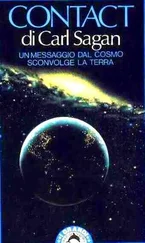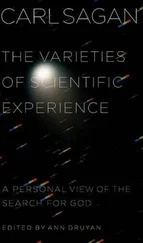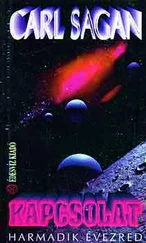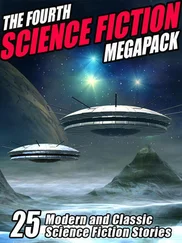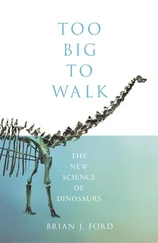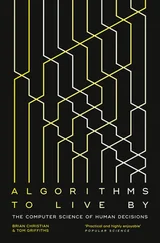Carl Sagan - Broca's Brain - The Romance of Science
Здесь есть возможность читать онлайн «Carl Sagan - Broca's Brain - The Romance of Science» весь текст электронной книги совершенно бесплатно (целиком полную версию без сокращений). В некоторых случаях можно слушать аудио, скачать через торрент в формате fb2 и присутствует краткое содержание. Жанр: Физика, на английском языке. Описание произведения, (предисловие) а так же отзывы посетителей доступны на портале библиотеки ЛибКат.
- Название:Broca's Brain: The Romance of Science
- Автор:
- Жанр:
- Год:неизвестен
- ISBN:нет данных
- Рейтинг книги:3 / 5. Голосов: 1
-
Избранное:Добавить в избранное
- Отзывы:
-
Ваша оценка:
- 60
- 1
- 2
- 3
- 4
- 5
Broca's Brain: The Romance of Science: краткое содержание, описание и аннотация
Предлагаем к чтению аннотацию, описание, краткое содержание или предисловие (зависит от того, что написал сам автор книги «Broca's Brain: The Romance of Science»). Если вы не нашли необходимую информацию о книге — напишите в комментариях, мы постараемся отыскать её.
Broca's Brain: The Romance of Science — читать онлайн бесплатно полную книгу (весь текст) целиком
Ниже представлен текст книги, разбитый по страницам. Система сохранения места последней прочитанной страницы, позволяет с удобством читать онлайн бесплатно книгу «Broca's Brain: The Romance of Science», без необходимости каждый раз заново искать на чём Вы остановились. Поставьте закладку, и сможете в любой момент перейти на страницу, на которой закончили чтение.
Интервал:
Закладка:
Some ancient Asian cosmological views are close to the idea of an infinite regression of causes, as exemplified in the following apocryphal story: A Western traveler encountering an Oriental philosopher asks him to describe the nature of the world:
“It is a great ball resting on the flat back of the world turtle.”
“Ah yes, but what does the world turtle stand on?”
“On the back of a still larger turtle.”
“Yes, but what does he stand on?”
“A very perceptive question. But it’s no use, mister; it’s turtles all the way down.”
We now know that we live on a tiny dust mote in an immense and humbling universe. The gods, if they exist, no longer intervene daily in human affairs. We do not live in an anthropocentric universe. And the nature, origin and fate of the cosmos seem to be mysteries far more profound than they were perceived to be by our remote ancestors.
But the situation is once again changing. Cosmology, the study of the universe as a whole, is becoming an experimental science. Information obtained by optical and radio telescopes on the ground, by ultraviolet and X-ray telescopes in Earth orbit, by the measurement of nuclear reactions in laboratories, and by determinations of the abundance of chemical elements in meteorites, is shrinking the arena of permissible cosmological hypotheses; and it is not too much to expect that we will soon have firm observational answers to questions once considered the exclusive preserve of philosophical and theological speculation.
This observational revolution began from an unlikely source. In the second decade of this century there was-as there still is-in Flagstaff, Arizona, an astronomical facility called the Lowell Observatory, established by none other than Percival Lowell, for whom the search for life on other planets was a consuming passion. It was he who popularized and promoted the idea that Mars was crisscrossed with canals, which he believed to be the artifacts of a race of beings enamoured of hydraulic engineering. We now know that the canals do not exist at all. They apparently were the product of wishful thinking and the limitations of observing through the Earth’s murky atmosphere.
Among his other interests, Lowell was concerned with the spiral nebulae-exquisite pinwheel-shaped luminous objects in the sky, which we now know to be distant collections of hundreds of billions of individual stars, like the Milky Way Galaxy of which our Sun is a part. But at that time there was no way to determine the distance to these nebulae, and Lowell was interested in an alternative hypothesis-that the spiral nebulae were not enormous, distant, multistellar entities, but rather smaller, closer objects which were the early stages of the condensation of an individual star out of the interstellar gas and dust. As such gas clouds contract under their self-gravitation, the conservation of angular momentum requires that they speed up to rapid rotation and shrink to a thin disc. Rapid rotation can be detected astronomically by spectroscopy, letting light from a distant object pass consecutively through a telescope, a narrow slit and a glass prism or other device which spreads white light out into a rainbow of colors. The spectrum of starlight contains bright and dark lines here and there in the rainbow, images of the slit of the spectrometer. An example is the bright yellow lines emitted by sodium, apparent as we throw a small piece of sodium into a flame. Material made of many different chemical elements will show many different spectral lines. The displacement of these spectral lines from their usual wavelengths when the light source is at rest gives us information on the velocity of the source toward and away from us-a phenomenon called the Doppler effect and familiar to us, in the physics of sound, as the increase or decrease in the pitch of an automobile horn as the car rapidly approaches or recedes.
Lowell is thought to have asked a young assistant, V. M. Slipher, to check the larger spiral nebulae to determine whether one side showed spectral lines shifted toward the red and the other toward the blue, from which it would be possible to deduce the speed of rotation of the nebula. Slipher investigated the spectra of the nearby spiral nebulae but found to his amazement that almost all of them showed a red shift, with virtually no sign of blue shifts anywhere in them. He had found not rotation, but recession. It was as if all the spiral nebulae were retreating from us.
A much more extensive set of observations was obtained in the 1920s at the Mount Wilson Observatory by Edwin Hubbell and Milton Humason. Hubbell and Humason developed a method of determining the distance to the spiral nebulae; it became apparent that they were not condensing gas clouds relatively nearby in the Milky Way Galaxy, but themselves great galaxies millions or more light-years away. To their amazement, they also found that the more distant the galaxy, the faster it was receding from us. Since it is unlikely that there is anything special about our position in the cosmos, this is best understood in terms of a general expansion of the universe; all galaxies recede from all others so that an astronomer on any galaxy would observe all other galaxies apparently retreating.
If we extrapolate such a mutual recession back into the past, we find that there was a time-perhaps 15 billion or 20 billion years ago-when all of the galaxies must have been “touching”; that is, confined to an extremely small volume of space. Matter in its present form could not survive such astonishing compressions. The very earliest stages of that expanding universe must have been dominated by radiation rather than matter. It is now conventional to talk of this time as the Big Bang.
Three kinds of explanation have been offered for this expansion of the universe: the Steady State, Big Bang and Oscillating Universe cosmologies. In the Steady State hypothesis, the galaxies recede from one another, the more distant galaxies moving with very high apparent velocities, their light shifted by the Doppler effect to longer and longer wavelengths. There will be a distance at which a galaxy will be moving so fast that it passes over what is called its event horizon and, from our vantage point, disappears. There is a distance so great that, in an expanding universe, there is no chance of getting information from beyond it. As time goes on, if nothing else intervenes, more and more galaxies will disappear over the edge. But in the Steady State cosmology, the matter lost over the edge is exactly compensated for by new matter continuously created everywhere, matter that eventually condenses into new galaxies. With the rate of disappearance of galaxies over the event horizon just balanced by the creation of new galaxies, the universe looks more or less identical from every place and in every epoch. In the Steady State cosmology there is no Big Bang; one hundred billion years ago the universe would have looked just the same, and one hundred billion years from now, likewise. But where does the new matter come from? How can matter be created from nothing? Proponents of the Steady State cosmology answer that it comes from whatever place proponents of the Big Bang get their Bang from. If we can imagine all the matter in the universe discontinuously created from nothing 15 billion to 20 billion years ago, why are we unable to imagine it being created in a tenuous trickle everywhere, continuously and forever? If the Steady State hypothesis is true, there was never a time when the galaxies were much closer. The universe in its largest structures is then unchanging and infinitely old.
But as placid and, in a strange way, as satisfying as the Steady State cosmology is, there is strong evidence against it. Whenever a sensitive radio telescope is pointed anywhere in the sky, the constant chatter of a kind of cosmic static can be detected. The characteristics of this radio noise match almost exactly what we would expect if the early universe was hot and filled with radiation in addition to matter. The cosmic blackbody radiation is very nearly the same everywhere in the sky and looks very much to be the distant rumblings of the Big Bang, cooled and enfeebled by the expansion of the universe but coursing still down the corridors of time. The primeval fireball, the explosive event that initiated the expanding universe, can be observed. Supporters of the Steady State cosmology must now be reduced to positing a large number of special sources of radiation which together somehow mimic exactly the cooled primeval fireball, or proposing that the universe far beyond the event horizon is steady state but, by a peculiar accident, we live in a kind of expanding bubble, a violent pimple in a much vaster but more placid universe. This idea has the advantage or flaw, depending on your point of view, of being impossible to disprove by any conceivable experiment, and virtually all cosmologists have abandoned the Steady State hypothesis.
Читать дальшеИнтервал:
Закладка:
Похожие книги на «Broca's Brain: The Romance of Science»
Представляем Вашему вниманию похожие книги на «Broca's Brain: The Romance of Science» списком для выбора. Мы отобрали схожую по названию и смыслу литературу в надежде предоставить читателям больше вариантов отыскать новые, интересные, ещё непрочитанные произведения.
Обсуждение, отзывы о книге «Broca's Brain: The Romance of Science» и просто собственные мнения читателей. Оставьте ваши комментарии, напишите, что Вы думаете о произведении, его смысле или главных героях. Укажите что конкретно понравилось, а что нет, и почему Вы так считаете.



